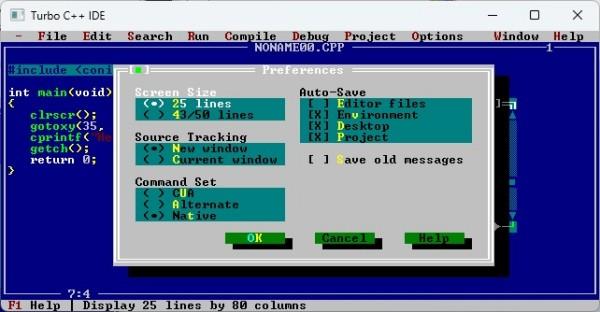“Tough Developer” did this blog recently about looking back at Turbo C and Turbo C++, and also installed an old version to play around with it.
It is a reminder of how far we have come, firstly from the late 1980s and early 1990s, and secondly for those who remember coding with it back then, how advanced it was in its day. Coding before this time was “basically” (yes, I know) standalone text file editing (the days of Emacs and Vim), and you’d debug really from compiler errors.
I’d been programming in Quick Basic for DOS before this, and I only wrote one program in C++ using Borland C++, before I moved on to Visual Basic (with real GUI Windows), and Clipper, Python, etc.
Because there was no Internet yet, nor YouTube, I had to buy paper books to learn from (even though the Borland C++ package came in a massive, cubed foot size box with about 7 or 8 manuals). I still have the three books: Using Borland C++ 3, Tom Swan’s Code Secrets, and The Waite Group’s Turbo C++ Bible.
Maybe I just did not try a hard enough, but the whole C++ syntax never sat well with me. Yes, it wrote really nice tight code, but for some reason I never felt I could just flow with it.
It felt like, back then, that computing was really advancing in leaps and bounds every year or every second year. Graphics cards changed resolution and EGA colour came out, sound went from beeps to real true sound, spreadsheets appeared for the first time, the mouse appeared, graphical interfaces appeared (before Windows even), simulated multitasking appeared, the 640k memory barrier was broken (remember extended RAM and DR DOS?), we progressed from single sided floppy discs to double-sided, stiffy discs, token ring networks (with their T-connectors) appeared and were later replaced by Ethernet, 10MB MFM hard drives, and finally USB ports.
Today, graphics are already so good, storage is so abundant, processors so powerful, so most new innovations are just incremental in nature, and hardly noticed. As I heard on the LTT channel the other day, a user will notice moving from 60Hz refresh rate to a 120Hz monitor, but they will really struggle to notice improvements from 144Hz to 240Hz even though it is double the refresh rate.
Apart from a bit bigger and a bit better, the only big advancement that I remember from the last 15 years or so is SSD drives coming out (super light power, much more robust, and superfast). Even webcams and optical mice had already started to appear 20 to 24 years ago.
See https://www.codeproject.com/Articles/5358258/Revisiting-Borland-Turbo-C-Cplusplus-A-Great-IDE-b

